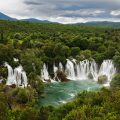The Lifeblood of Thailand: A Comprehensive Guide to Its River Systems
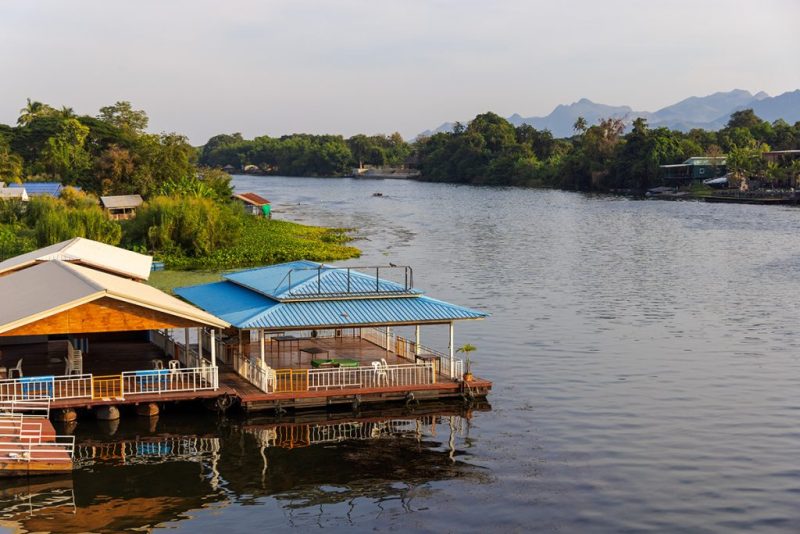
Thailand’s intricate network of rivers has played a pivotal role in shaping the country’s landscape, culture, and economy for centuries. These waterways, ranging from mighty rivers that traverse multiple provinces to smaller tributaries feeding local ecosystems, form the backbone of Thailand’s geography and have profound impacts on its people and biodiversity.
This comprehensive guide delves into the fascinating world of Thailand’s rivers, exploring their origins, characteristics, and the myriad ways they influence life in the Land of Smiles.
From the iconic Chao Phraya that winds through the heart of Bangkok to the international Mekong that forms part of Thailand’s border, these aquatic arteries are more than just bodies of water – they are the lifeblood of the nation. As we embark on this journey through Thailand’s riverine landscape, we’ll uncover the rich tapestry of history, ecology, and human activity that has been woven along these waterways over millennia.
Read about the waterfalls of Thailand
The Major River Systems of Thailand
Thailand boasts an impressive array of river systems that crisscross the country, each with its own unique characteristics and significance. These waterways can be broadly categorized into several major systems, each playing a crucial role in the country’s hydrology, ecology, and human geography.
The Chao Phraya River system stands out as the most prominent, often referred to as the “River of Kings.” This extensive network drains a significant portion of central Thailand, including the capital city of Bangkok. Its waters have nurtured civilizations for centuries, supporting agriculture, trade, and urban development.
In the northeast, the mighty Mekong River forms a natural border with Laos, influencing the region’s culture and economy. Though only a portion of its course lies within Thai territory, its impact on the country is profound, particularly in terms of fisheries and international relations.
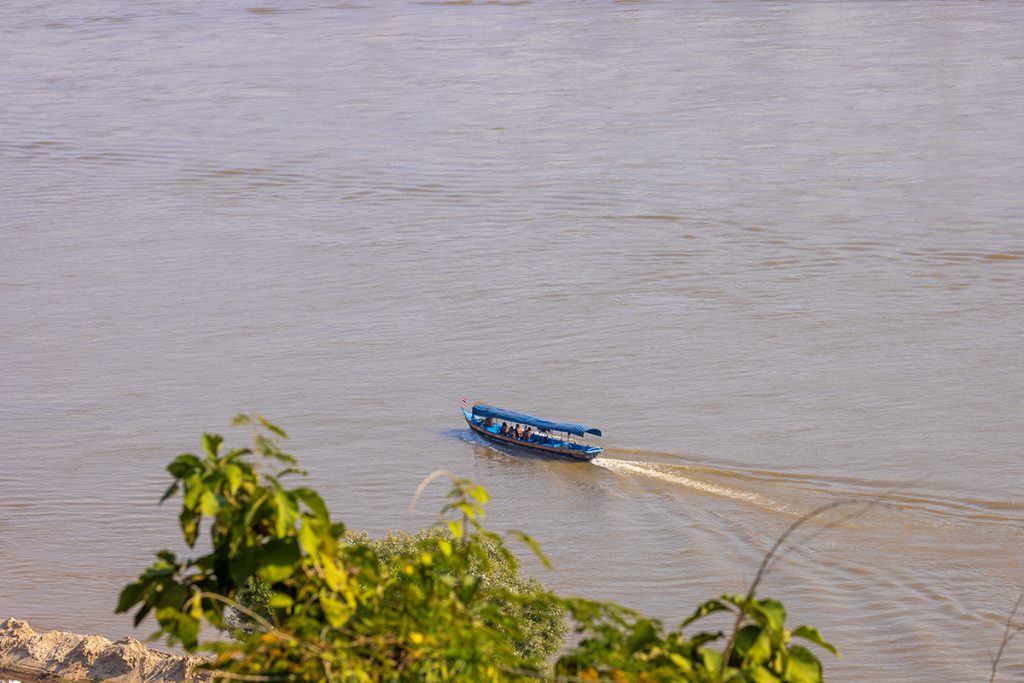
The Mae Klong River system in the west, while smaller in scale, is no less important to the communities it serves. Known for its unique railway market and diverse ecosystems, this river showcases the intimate relationship between Thai people and their waterways.
Other significant systems include the Ping, Wang, Yom, and Nan rivers in the north, which eventually converge to form the Chao Phraya. In the south, numerous shorter rivers drain the narrow peninsula, each supporting local ecosystems and communities in their own right.
Understanding these major river systems is crucial for appreciating Thailand’s geography, climate patterns, and the distribution of its natural resources. As we delve deeper into each system, we’ll uncover the intricate ways in which these rivers have shaped and continue to influence the Thai landscape and way of life.
The Chao Phraya: Thailand’s River of Kings
The Chao Phraya River, often hailed as the lifeline of central Thailand, holds a special place in the country’s history, culture, and economy. Stretching approximately 372 kilometers from its origin to the Gulf of Thailand, this majestic waterway has earned its moniker as the “River of Kings” due to its immense significance to the Thai people.
The river’s journey begins at the confluence of the Ping and Nan rivers in Nakhon Sawan province, where it starts its southward flow through the heart of Thailand. As it meanders through the central plains, the Chao Phraya creates a fertile delta that has been the cradle of Thai civilization for centuries. This alluvial plain, enriched by annual floods, has long been the country’s rice bowl, supporting a thriving agricultural sector.
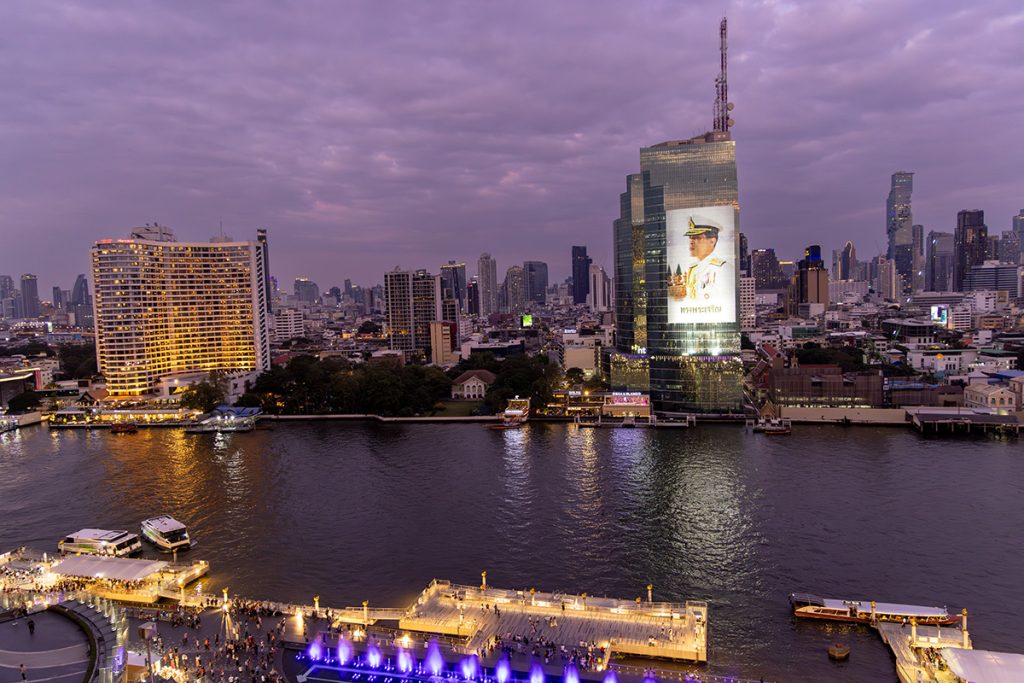
One of the most striking features of the Chao Phraya is its extensive network of tributaries and canals, or “khlongs,” that branch out from the main river. These waterways have historically served as vital transportation routes, earning Bangkok the nickname “Venice of the East.” Today, while many khlongs have been filled in to make way for roads, some still play an important role in local transportation and flood management.
The river’s significance extends beyond its practical uses. It has been a source of inspiration for Thai art, literature, and spirituality. Numerous temples and palaces line its banks, including the Grand Palace and Wat Arun in Bangkok, testament to the river’s cultural importance.
However, the Chao Phraya faces numerous challenges in the modern era. Rapid urbanization, industrial development, and agricultural intensification have led to increased pollution and altered the river’s natural flow. Efforts are underway to address these issues, recognizing the critical role the Chao Phraya plays in Thailand’s environmental and economic well-being.
As we continue to explore Thailand’s river systems, the Chao Phraya stands out as a prime example of how these waterways are inextricably linked to the nation’s past, present, and future.
The Mekong: An International Lifeline
The Mekong River, one of Asia’s mightiest waterways, plays a crucial role in Thailand’s northeastern region, despite only forming part of the country’s border. This international river, which originates in the Tibetan Plateau and flows through six countries before reaching the South China Sea, has a profound impact on Thailand’s ecology, economy, and regional relations.
In Thailand, the Mekong forms a natural boundary with Laos for about 850 kilometers, influencing the landscape and livelihoods of the people in the region known as Isan. The river’s annual flood cycle has shaped the agricultural practices of riverside communities for generations, depositing nutrient-rich sediment that enhances soil fertility.
The Mekong is renowned for its rich biodiversity, hosting numerous species of fish, including the iconic Mekong giant catfish. This aquatic abundance has made fishing a crucial economic activity for many Thai communities along the river. However, the construction of dams upstream has raised concerns about the impact on fish migration patterns and overall ecosystem health.
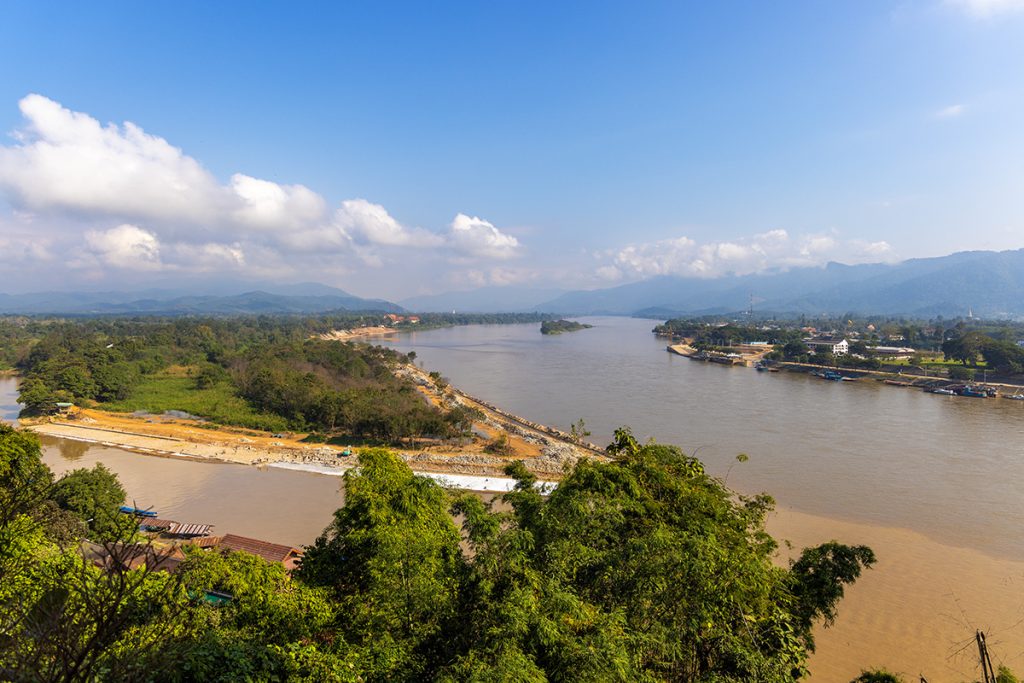
Beyond its ecological significance, the Mekong serves as an important transportation route, facilitating trade between Thailand and its neighbors. The river has also become a focal point for tourism, with boat trips and riverside attractions drawing visitors to explore the unique culture of the Mekong region.
The international nature of the Mekong presents both opportunities and challenges for Thailand. While it fosters regional cooperation through initiatives like the Mekong River Commission, it also requires careful diplomacy to balance the needs and interests of all riparian countries. Issues such as water management, hydropower development, and environmental conservation often necessitate multilateral negotiations.
As climate change and human activities continue to affect the Mekong’s flow and ecosystem, Thailand faces the challenge of adapting its policies and practices to ensure the sustainable use of this vital resource. The future of the Mekong will undoubtedly play a significant role in shaping Thailand’s environmental and economic landscape in the years to come.
Northern Thailand’s River Network
The northern region of Thailand is characterized by a complex network of rivers that not only shape the mountainous landscape but also play a crucial role in the local ecology and economy. This intricate system is dominated by four main rivers: the Ping, Wang, Yom, and Nan, collectively known as the four great rivers of the north.
The Ping River, originating in the Daen Lao Range, flows southward through the provinces of Chiang Mai and Lamphun before joining the Nan River to form the Chao Phraya. Its valley has been a center of civilization for centuries, with the ancient city of Chiang Mai nestled along its banks. The river’s importance for irrigation and transportation has made it integral to the region’s agricultural and cultural development.
The Wang River, while smaller in size, is no less significant to the communities it serves. Flowing through Lampang province, it supports local agriculture and is known for its scenic beauty, attracting tourists to its riverside attractions and historical sites.
The Yom River, originating in Phayao province, meanders through the northern plains, playing a vital role in the region’s water management. Unlike the other major northern rivers, the Yom lacks a large dam on its main course, which has sparked ongoing debates about flood control and water storage in the region.
The Nan River, the easternmost of the four, begins its journey in the mountains of Nan province before flowing southward to join the Ping. Its watershed is crucial for hydroelectric power generation, with several major dams along its course contributing significantly to Thailand’s energy supply.
These northern rivers not only provide water for agriculture and urban areas but also support diverse ecosystems. The forested mountains through which they flow are home to numerous species of plants and animals, many of which are endemic to the region. However, deforestation and land-use changes pose significant threats to these delicate ecosystems.
The management of these northern rivers presents unique challenges. Balancing the needs for flood control, irrigation, and environmental conservation requires careful planning and cooperation among various stakeholders. As climate change alters precipitation patterns in the region, the sustainable management of these water resources becomes increasingly critical for northern Thailand’s future.
The Eastern Seaboard Rivers
The eastern seaboard of Thailand, stretching along the Gulf of Thailand, is home to several important river systems that play a crucial role in the region’s ecology and economy. These rivers, while shorter than their counterparts in the north and central regions, are vital for the local communities and industries that have developed along the coast.
One of the most significant rivers in this region is the Bang Pakong River. Originating at the confluence of the Prachin Buri and Nakhon Nayok rivers, it flows for about 122 kilometers before emptying into the Gulf of Thailand. The Bang Pakong basin is known for its fertile soil, supporting extensive agriculture, particularly rice cultivation. The river also plays a crucial role in the region’s industrial development, with several industrial estates located along its banks.
Another important waterway in the eastern region is the Prasae River, which flows through Rayong province. Although relatively short, this river is vital for local agriculture and supports a diverse ecosystem, including mangrove forests near its estuary. The Prasae River’s watershed has been the focus of conservation efforts aimed at preserving its ecological integrity while supporting local livelihoods.
The Chanthaburi River, flowing through the province of the same name, is renowned for its role in supporting the region’s fruit orchards. The river’s basin is famous for producing high-quality durian, mangosteen, and rambutan, contributing significantly to Thailand’s fruit export industry. The river’s estuary is also an important area for aquaculture, particularly shrimp farming.
These eastern rivers face unique challenges due to the rapid industrial and urban development along the eastern seaboard. Water pollution from industrial effluents and urban runoff is a growing concern, threatening both aquatic ecosystems and human health. Additionally, the increasing demand for water from various sectors, including agriculture, industry, and urban areas, puts pressure on these river systems.
Efforts are underway to address these challenges through integrated water resource management approaches. These include initiatives to improve water quality, promote sustainable agricultural practices, and enhance the resilience of coastal ecosystems. The future of the eastern seaboard rivers will depend on successfully balancing economic development with environmental conservation, ensuring their continued role in supporting the region’s prosperity.
Southern Thailand’s Peninsular Rivers
The narrow peninsula of southern Thailand is characterized by numerous short rivers that flow from the central mountain range to either the Andaman Sea in the west or the Gulf of Thailand in the east. These rivers, while smaller in scale compared to the major systems in other parts of the country, play a crucial role in the region’s unique ecology and economy.
On the western coast, rivers such as the Trang and the Palian flow swiftly from the mountains to the Andaman Sea. These rivers have carved out dramatic landscapes, creating picturesque waterfalls and lush valleys. The Trang River, for instance, is not only important for local agriculture but also supports eco-tourism activities, with its mangrove forests and limestone caves attracting nature enthusiasts.
The eastern side of the peninsula features rivers like the Tapi and the Pattani. The Tapi River, flowing through Surat Thani province, is one of the longest rivers in southern Thailand. Its basin is crucial for the region’s agriculture, particularly rubber and palm oil plantations. The river’s estuary, where it meets the Gulf of Thailand, supports extensive mangrove forests and is an important area for fisheries.
The Pattani River, flowing through the southernmost provinces, has historical significance as it once formed part of an ancient trade route. Today, it continues to be vital for local agriculture and fisheries, despite the challenges posed by ongoing social and political issues in the region.
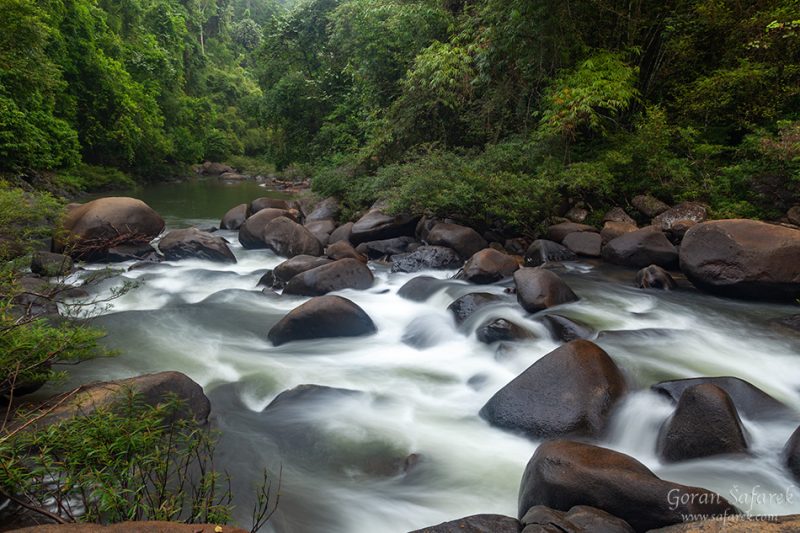
One unique feature of southern Thailand’s rivers is their role in supporting the region’s biodiversity. Many of these river systems flow through areas of high conservation value, including national parks and wildlife sanctuaries. The watersheds of these rivers are home to numerous species of plants and animals, some of which are endemic to the region.
However, these river systems face several challenges. Deforestation in the upper watersheds has led to increased soil erosion and sedimentation, affecting water quality and aquatic habitats. Climate change is also a growing concern, with changing rainfall patterns potentially impacting river flow and the communities that depend on these waters.
Efforts to protect and sustainably manage southern Thailand’s rivers often involve balancing conservation with the needs of local communities. Initiatives focusing on reforestation, sustainable agriculture, and community-based natural resource management are being implemented to ensure the long-term health of these vital waterways.
The Role of Rivers in Thailand’s Economy
Thailand’s rivers have been instrumental in shaping the country’s economic landscape, serving as lifelines for various sectors and driving regional development. From agriculture to industry, transportation to tourism, these waterways play a multifaceted role in supporting the nation’s economic growth.
Agriculture, a cornerstone of Thailand’s economy, relies heavily on river systems for irrigation. The fertile floodplains of major rivers like the Chao Phraya and the Mekong have long been the country’s primary rice-growing regions. The annual flooding cycle, while sometimes destructive, has historically deposited nutrient-rich sediment, enhancing soil fertility. Modern irrigation systems drawing water from these rivers have expanded agricultural possibilities, allowing for year-round cultivation and diversification of crops.
The industrial sector also benefits significantly from Thailand’s rivers. Many industrial estates are strategically located along riverbanks to ensure a steady water supply for manufacturing processes. The Eastern Economic Corridor, a major development initiative, leverages the eastern seaboard’s river systems to support its ambitious industrial and logistical plans.
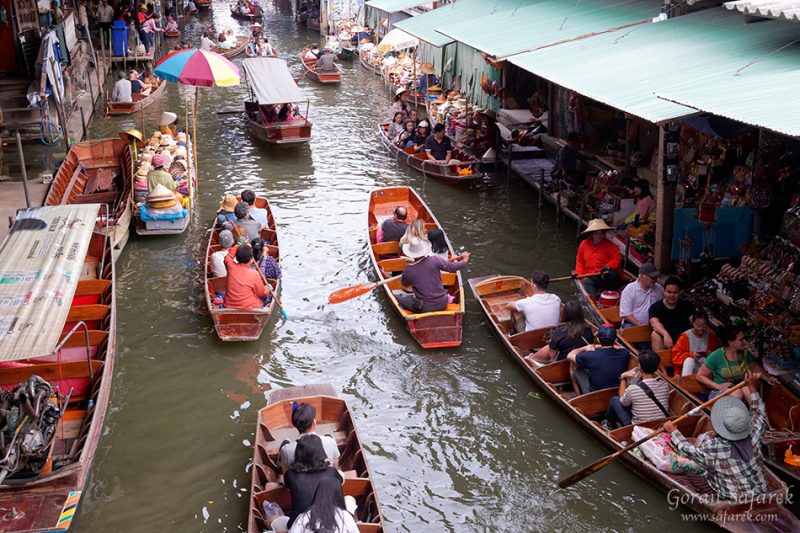
Transportation and trade have historically been closely tied to Thailand’s waterways. While road and rail networks have reduced reliance on river transport in many areas, waterborne trade remains important, particularly for bulk goods. The Chao Phraya River, for instance, still serves as a crucial artery for moving goods to and from Bangkok’s port.
Tourism is another sector where rivers play a vital role. River cruises, floating markets, and riverside attractions draw millions of visitors annually. The famous Damnoen Saduak floating market near Bangkok and the lantern festivals along the Ping River in Chiang Mai are prime examples of how rivers contribute to Thailand’s tourism appeal.
Hydroelectric power generation is a significant economic benefit derived from Thailand’s rivers. Dams on rivers like the Ping and the Nan not only produce electricity but also help regulate water flow for flood control and irrigation purposes. However, the environmental and social impacts of large-scale dam projects remain a topic of ongoing debate.
Fisheries, both inland and in the rich estuarine areas where rivers meet the sea, contribute significantly to local economies and food security. The Mekong River, in particular, supports one of the world’s largest inland fisheries, providing livelihoods for thousands of Thai families.
As Thailand continues to develop, the sustainable management of its river resources becomes increasingly critical. Balancing economic growth with environmental conservation and equitable resource distribution presents ongoing challenges. Innovative approaches to water management, pollution control, and sustainable development will be key to ensuring that Thailand’s rivers continue to support a thriving economy while maintaining their ecological integrity.
Biodiversity and Ecosystems of Thai Rivers
Thailand’s rivers are not merely channels of water; they are complex ecosystems teeming with life and supporting a remarkable array of biodiversity. From the mountainous headwaters to the coastal deltas, these aquatic environments host a diverse range of species, many of which are found nowhere else in the world.
The upper reaches of Thailand’s rivers, often flowing through forested mountains, support unique highland aquatic ecosystems. These areas are characterized by fast-flowing, oxygen-rich waters that host specialized species adapted to these conditions. The Mae Klong River system, for instance, is home to several endemic species of fish, including the critically endangered Kra big-headed turtle.
As rivers flow into the lowlands, they create a variety of habitats including deep pools, rapids, and floodplains. These diverse environments support a wide range of fish species, from the giant Mekong catfish to smaller, colorful species popular in the aquarium trade. The Mekong River basin alone is estimated to contain over 1,000 fish species, making it one of the most ichthyologically diverse river systems in the world.
Riparian forests along riverbanks play a crucial role in maintaining river health and biodiversity. These forests provide habitat for numerous terrestrial species, prevent erosion, and contribute organic matter to the aquatic ecosystem. Unfortunately, many of these forests have been degraded or cleared, impacting both terrestrial and aquatic biodiversity.
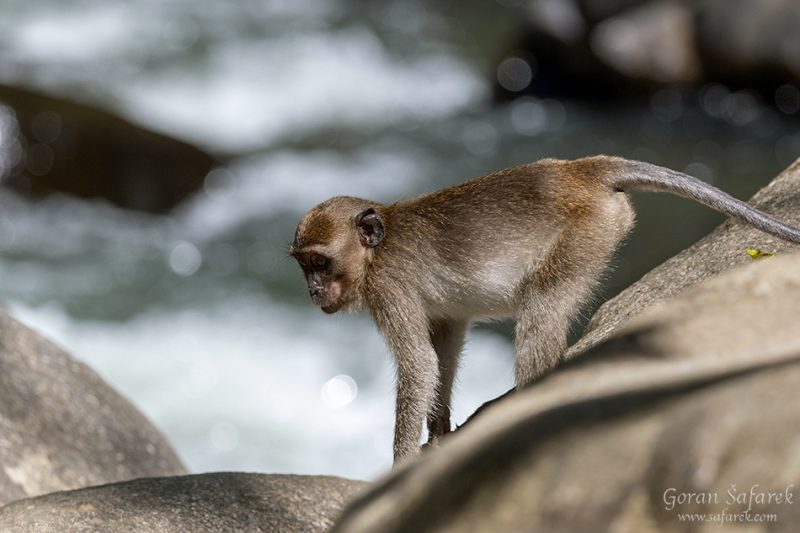
The estuarine areas where rivers meet the sea are particularly rich in biodiversity. Mangrove forests, found at the mouths of many Thai rivers, serve as nurseries for numerous fish and crustacean species. These ecosystems also provide critical habitat for birds, including many migratory species that use these areas as stopover points on their long journeys.
Thailand’s rivers also support a variety of aquatic plants, from floating species like water hyacinth to submerged aquatic vegetation that provides crucial habitat for fish and invertebrates. Some of these plants, like the lotus, have cultural significance in addition to their ecological role.
However, the biodiversity of Thailand’s rivers faces numerous threats. Habitat destruction, pollution, overfishing, and the introduction of invasive species have all taken their toll on native species. Climate change poses an additional challenge, potentially altering river flow patterns and water temperatures, which could have far-reaching impacts on aquatic ecosystems.
Conservation efforts are underway to protect and restore Thailand’s river biodiversity. These include the establishment of protected areas, efforts to reduce pollution, and programs to reintroduce native species. Community-based conservation initiatives have shown promise, engaging local people in the protection of their river resources.
The preservation of Thailand’s river biodiversity is not just an environmental imperative; it’s also crucial for maintaining the ecosystem services that these rivers provide, from fisheries to water purification. As Thailand continues to develop, finding ways to balance economic growth with biodiversity conservation will be essential for the long-term health of its river ecosystems.
Environmental Challenges and Conservation Efforts
Thailand’s rivers, while vital to the country’s ecology and economy, face a myriad of environmental challenges that threaten their health and sustainability. These issues range from pollution and habitat destruction to the impacts of climate change. However, alongside these challenges, there are growing efforts to conserve and restore these crucial waterways.
Water pollution is one of the most pressing issues affecting Thailand’s rivers. Industrial effluents, agricultural runoff, and untreated domestic wastewater all contribute to declining water quality. The Chao Phraya River, flowing through heavily industrialized and urbanized areas, is particularly affected. Efforts to address this issue include stricter regulations on industrial discharges, improvements in wastewater treatment infrastructure, and campaigns to raise public awareness about water pollution.
Deforestation in river catchment areas has led to increased soil erosion and sedimentation, affecting water quality and altering river flow patterns. This is particularly problematic in the northern regions, where steep terrain exacerbates erosion when forest cover is removed. Reforestation programs and sustainable land management practices are being implemented to combat this issue, though progress is often slow and challenging.
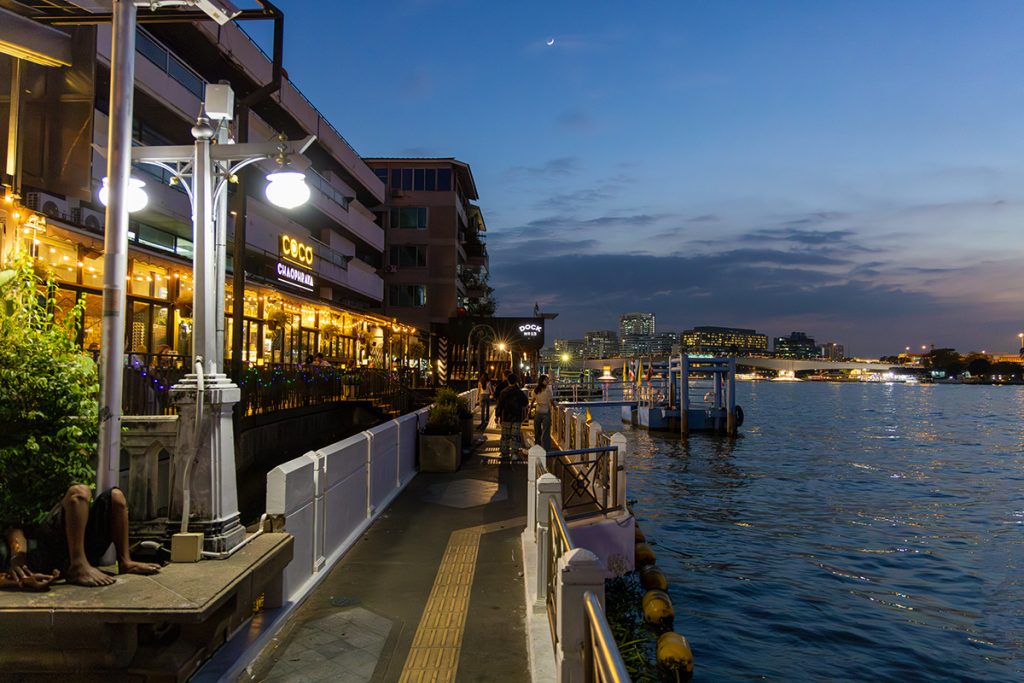
The construction of dams and water diversion projects, while providing benefits such as hydroelectric power and irrigation, has significantly altered river ecosystems. These structures can disrupt fish migration patterns, change water flow regimes, and alter sediment transport. There’s an ongoing debate about balancing the need for water and energy resources with the preservation of river ecosystems. Some projects have incorporated fish ladders and environmental flow requirements to mitigate their impacts.
Overfishing is another significant threat, particularly in rivers like the Mekong where fish are a crucial source of protein for local communities. The use of destructive fishing practices and the overexploitation of certain species have led to declining fish populations. Efforts to address this include the establishment of fish conservation zones, regulation of fishing practices, and programs to promote sustainable aquaculture as an alternative to wild capture fisheries.
Climate change poses a growing threat to Thailand’s rivers. Changing precipitation patterns are likely to affect river flow regimes, potentially leading to more frequent and severe floods and droughts. Rising sea levels threaten coastal and delta regions with saltwater intrusion. Adaptation strategies are being developed, including improved water management systems and the restoration of natural flood buffers like mangrove forests.
Conservation efforts are increasingly taking an integrated approach, recognizing the interconnectedness of river ecosystems with surrounding landscapes. The concept of ridge-to-reef management, which considers entire watersheds from mountains to coastal areas, is gaining traction. This approach aims to address environmental issues holistically, considering both ecological and socio-economic factors.
Community-based conservation initiatives have shown promise in many areas. These programs engage local communities in river monitoring, reforestation efforts, and sustainable resource management. By involving those who depend directly on river resources, these initiatives aim to create more effective and sustainable conservation outcomes.
International cooperation is crucial, particularly for rivers like the Mekong that cross national boundaries. Organizations such as the Mekong River Commission work to promote sustainable development and management of shared water resources.
While the challenges facing Thailand’s rivers are significant, there is growing recognition of their importance and the need for their protection. As conservation efforts continue to evolve and adapt, there is hope that these vital waterways can be preserved for future generations while continuing to support Thailand’s development and biodiversity.
The Cultural Significance of Rivers in Thai Society
Rivers have played a central role in Thai culture and society for millennia, shaping not only the physical landscape but also the spiritual, artistic, and social fabric of the nation. From ancient times to the present day, these waterways have been deeply woven into the Thai way of life, influencing everything from religious practices to daily routines.
In Thai mythology and religion, rivers hold a sacred status. Many rivers are associated with naga, serpent-like deities believed to inhabit the waters. The Mekong River, for instance, is often referred to as the “Naga River” due to these beliefs. Water from rivers is used in many Buddhist ceremonies, symbolizing purification and blessing. The annual Loy Krathong festival, where people float decorated baskets on rivers and canals, is a beautiful expression of respect for water spirits and a way to wash away misfortunes.
Historically, rivers have been the lifelines of Thai civilization. Many of Thailand’s most important cities, including the former capitals of Ayutthaya and Thonburi, were established along rivers. These waterways served as natural defenses, trade routes, and sources of sustenance. The intricate canal systems of cities like Bangkok, which earned it the nickname “Venice of the East,” reflect the historical importance of water-based transportation and commerce.
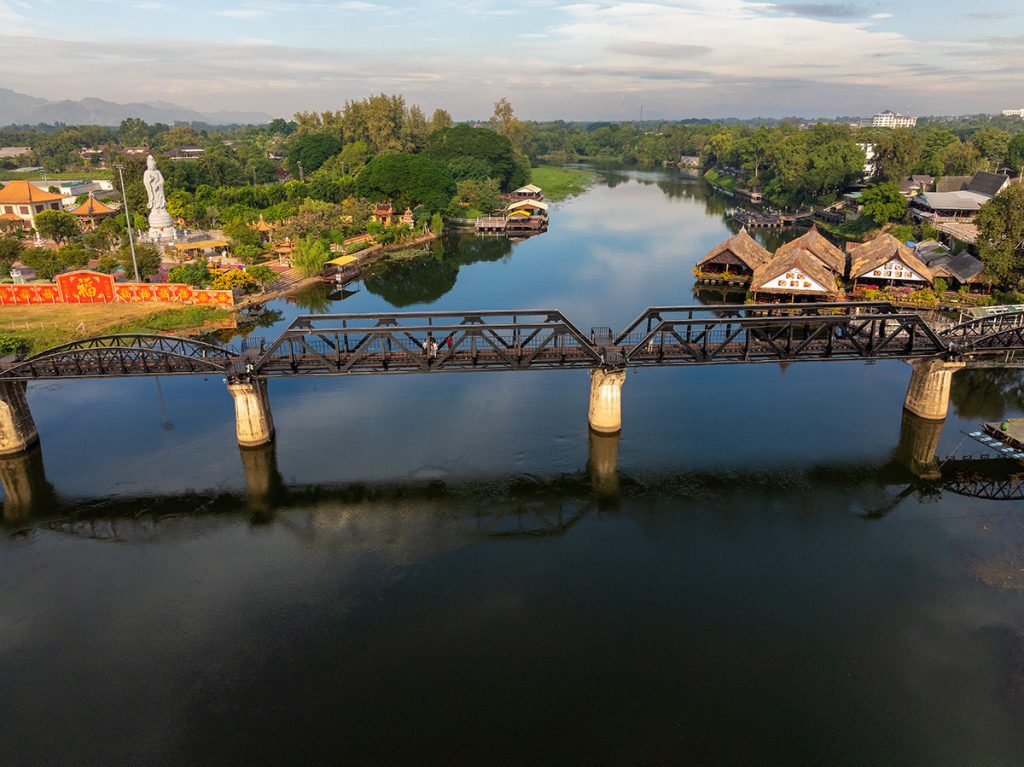
Rivers have also been a source of inspiration for Thai art and literature. Traditional Thai paintings often depict scenes of riverside life, with images of boats, fishermen, and water-based activities. In literature, rivers often serve as metaphors for life’s journey or as settings for important events in stories and poems. The famous Thai epic “Khun Chang Khun Phaen” features numerous scenes set along the Suphan River, illustrating the central role of rivers in Thai narrative traditions.
The traditional Thai way of life has been closely tied to rivers. Floating markets, once a common feature across Thailand, represent a unique aspect of Thai culture that has evolved around river life. While many of these markets now cater primarily to tourists, they offer a glimpse into a way of life that was once widespread throughout the country.
Rivers have also influenced Thai architecture. Traditional Thai houses were often built on stilts to adapt to the annual flooding cycle, a practice that can still be seen in some riverside communities. Temples and palaces were often oriented towards rivers, reflecting their spiritual and practical importance.
In modern times, while urbanization and technological advances have changed many aspects of Thai life, rivers continue to hold cultural significance. Riverside areas in cities like Bangkok remain popular spots for evening gatherings, with people enjoying food, music, and socializing along the water’s edge. The annual Royal Barge Procession on the Chao Phraya River, although rare, is a spectacular display of Thai cultural heritage and the enduring importance of rivers in state ceremonies.
However, the relationship between Thai society and its rivers is evolving. As environmental concerns grow, there’s an increasing awareness of the need to protect these waterways. This has led to a resurgence of interest in traditional knowledge about river management and a renewed appreciation for the cultural value of healthy river ecosystems.
Educational initiatives are also playing a role in maintaining the cultural connection to rivers. Many schools incorporate river studies into their curriculum, teaching students about the ecological, historical, and cultural importance of these waterways. Community-based projects often focus on reviving traditional river-based practices while adapting them to modern environmental standards.
As Thailand continues to develop and modernize, the challenge lies in maintaining the deep cultural connections to its rivers while addressing the environmental and developmental pressures they face. The cultural significance of these waterways provides a powerful motivation for their conservation, ensuring that they continue to play a vital role in Thai society for generations to come.
Future Prospects and Sustainable Management of Thailand’s Rivers
As Thailand looks to the future, the sustainable management of its river systems stands as a critical challenge and opportunity. The country’s rivers, having supported its development for centuries, now face unprecedented pressures from population growth, economic development, and climate change. However, with these challenges come innovative approaches and renewed commitments to preserving these vital waterways for future generations.
One of the key areas of focus is integrated water resource management (IWRM). This approach recognizes the interconnectedness of water resources with land use, economic activities, and ecosystem health. Thailand has been working to implement IWRM principles, aiming to balance the needs of various sectors while maintaining ecological integrity. This includes efforts to improve water allocation, enhance water use efficiency, and protect water quality.
Climate change adaptation is becoming an increasingly important aspect of river management in Thailand. As the country faces the prospect of more frequent and severe floods and droughts, there’s a growing emphasis on building resilience into water management systems. This includes the development of climate-resilient infrastructure, improved flood and drought forecasting systems, and the restoration of natural flood buffers such as wetlands and mangrove forests.
Technology is playing an increasingly important role in river management. Advanced monitoring systems, including satellite imagery and real-time water quality sensors, are being deployed to provide more accurate and timely data on river conditions. This information is crucial for making informed management decisions and responding quickly to environmental threats.
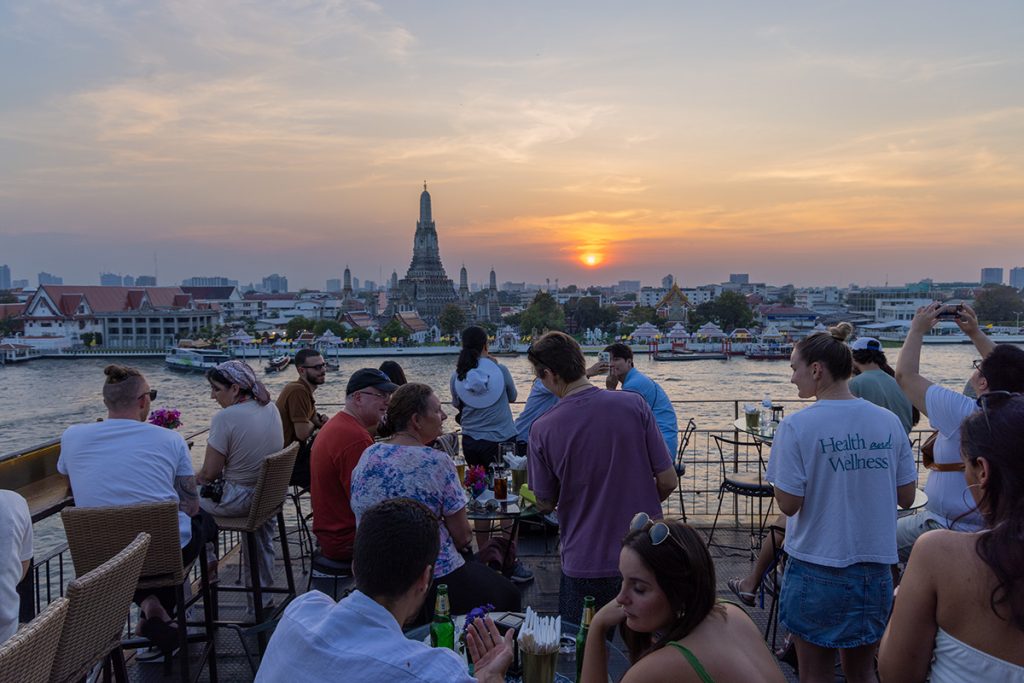
There’s also a growing recognition of the need to involve local communities in river management. Community-based approaches, which draw on traditional knowledge and practices while incorporating modern scientific understanding, are showing promise in many areas. These initiatives not only help to protect river resources but also empower local communities and ensure that management strategies are culturally appropriate and socially acceptable.
The concept of “green infrastructure” is gaining traction in urban areas. This involves using natural systems, such as urban wetlands and rain gardens, to manage stormwater and improve water quality. Cities like Bangkok are exploring ways to incorporate these nature-based solutions into their urban planning, potentially transforming their relationship with rivers and canals.
International cooperation will continue to be crucial, particularly for transboundary rivers like the Mekong. Thailand is actively involved in regional initiatives aimed at promoting sustainable water resource management and addressing shared challenges. These collaborative efforts will be essential for addressing issues that extend beyond national borders.
Education and public awareness will play a key role in shaping the future of Thailand’s rivers. There’s a growing emphasis on environmental education, aimed at fostering a new generation of Thais who understand the value of their river systems and are committed to their protection. Public engagement campaigns are also working to raise awareness about river conservation issues and promote sustainable water use practices.
The economic potential of rivers is being reimagined with a focus on sustainability. Eco-tourism initiatives, for example, are being developed to provide economic benefits to local communities while incentivizing conservation. Similarly, there’s growing interest in developing sustainable fisheries and aquaculture practices that can support livelihoods without depleting river resources.
As Thailand continues to develop, balancing economic growth with environmental protection will remain a key challenge. However, there’s a growing recognition that healthy rivers are essential for long-term prosperity and well-being. By embracing innovative management approaches, leveraging technology, and fostering a culture of conservation, Thailand has the opportunity to ensure that its rivers continue to be a source of life, livelihood, and cultural identity for generations to come.
The future of Thailand’s rivers will depend on the collective efforts of the government, civil society, the private sector, and individual citizens. With continued commitment and innovative approaches, there’s hope that these vital waterways can be preserved and even revitalized, continuing to play their crucial role in Thailand’s ecology, economy, and culture.

